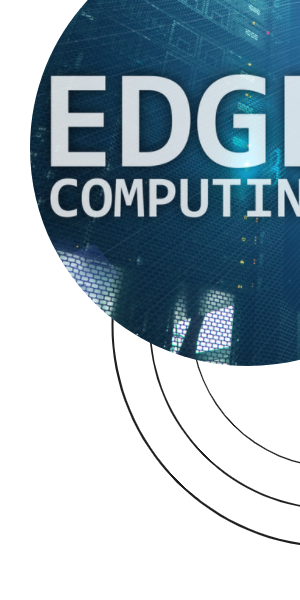
This is the first of our Thought Leader Series. This series aims to help better understand the latest technology trends by providing insights that will help business leaders understand emerging technologies, their applications, and how they could transform the future of business.
Edge Computing & Digital Transformation
Edge computing is a network architecture with computation and data being processed at the edge of the network or “at the device” rather than in the cloud. This proximity to data delivers apparent benefits such as faster insights, improved response times, and better bandwidth availability, resulting in immense operational cost benefits and considerably enhancing end-user experience.
THE NEED FOR EDGE COMPUTING
Edge computing solutions are poised for explosive growth and innovation, driven by the need for real-time insights and localized response.
The accelerated growth and increasing computing power of IoT devices today results in unprecedented volumes of data. With the introduction of 5G Networks and an increased number of connected devices, these data volumes will continue to grow phenomenally.
The current scale and complexity of data created by connected devices have outpaced network and infrastructure capabilities. Routing all that device-generated data to a centralized data center or the cloud causes bandwidth and latency problems.


LEVERAGING THE POTENTIAL OF THE EDGE
From connected vehicles to intelligent robots in our factories, the amount of data generated by these devices is ever-increasing and has tremendous potential. Yet, most of this IoT data is untapped or used at all in decision-making.
Edge computing harnesses the embedded intelligence & growing computing capability in today’s devices to provide deep insights and predictive analysis in near-real-time. This increased analytics capability in edge devices can power innovation to improve quality, influence operational processes, and significantly enhance value for your customers and your business.
Because data does not traverse over a network to a cloud or data center to be processed, latency is reduced significantly while considerably impacting network and cloud costs.
TRANSITIONING TO THE EDGE TECHNOLOGY & BENEFITS TO CONSIDER
- Edge computing helps you accelerate performance by analyzing data locally.
- It unlocks the potential of vast untapped data that’s generated by connected devices. Allows you to uncover new business opportunities, increases operational efficiency, and significantly improve experiences for your customers.
- Engage a trusted partner with extensive industry expertise. Find a partner with a proven multi-cloud platform and a comprehensive portfolio of services designed to increase scalability, accelerate performance and strengthen security in your edge deployments.
This process of transition is not without its challenges. An effective edge computing model should address network security risks, management complexities, latency, and bandwidth limitations. A viable model should help you:
- Manage workloads across all clouds and on any number of devices
- Deploy applications to all edge locations dependably and seamlessly
- Maintain agility and adapt to evolving needs
- Engage securely and with certainty

THE FUTURE OF EDGE COMPUTING FOR YOUR INDUSTRY
Edge Computing is opening a world of new revenue opportunities across most industries.
With Edge Computing, technology leaders across industries & organizations are transforming legacy apps, building personalized customer experiences, using insights for faster actions, and staying future-ready.
If you have any queries about Edge Computing and how it can transform your business do write to me on psatish@claysol.com

